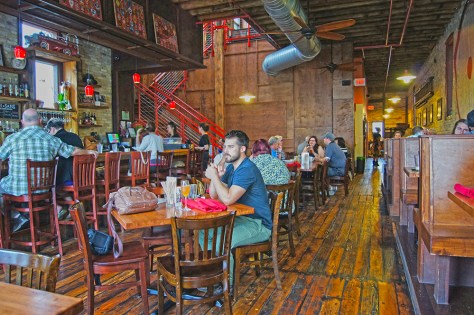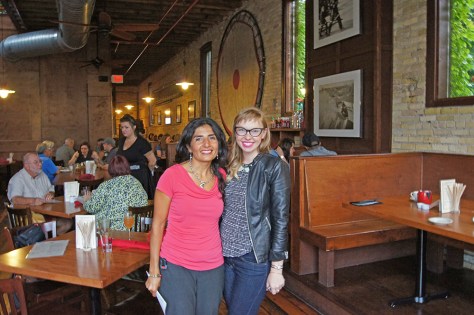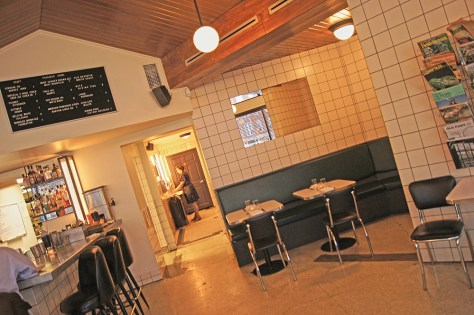Cotton-bunch clouds find their reflection in the 300 windows that scale the cream-colored brick facade of the Victorian Gothic factory as it towers over North 10th Street. The street is so quiet on a Friday morning, I swear I can almost hear the hum of a turn-of-the-century working brewery behind those brick walls– the bubbling of the copper kettles and the chatter of brewers at work. Sadly, beer hasn’t been brewed on these grounds in over 20 years. But from 1905 to 1996, that bustling hum could be heard across the dozen brewing buildings on the Pabst property.
Pabst Brewing Company has its earliest roots in Best and Company brewery, established in 1844 by Jacob Best, Sr. and his four sons, Jacob, Jr., Charles, Phillip and Lorenz. In 1850, Charles and Lorenz left to open their own brewery, which would later become Miller Brewing Company. (Talented family, huh?) Phillip Best’s son-in-law, Frederick Pabst, bought into the business in 1864 and became the sole owner in 1888, and the brewery was renamed “Pabst Brewing Company” a year later.

Somewhere in between Frederick taking ownership of Best’s brewery and the advent of Pabst, the shiny new brewery at 1215 North 10th Street was completed (1882, to be exact). Fun fact: the same year the building was erected, Best brewing began tying a blue silk ribbon around each bottle of their “Best Select” beer to represent all of the US and international awards they’d earned. The nickname “blue ribbon” became official in 1898, though the practice of tying the ribbons on the bottles ended in 1950.
Pabst became the nation’s largest in 1899 through the first half of the 20th century. The brewery was one of the first to welcome visitors for tours in 1907.

Except for a stint aging cheese in its cellars during prohibition, Best and then Pabst brewed the bubbly stuff at 1215 North 10th Street until the brewery suddenly shut down in 1996 under a new owner. The Cream City-brick building sat empty and abandoned for ten years.

In 2006, its savior– local real estate developer and philanthropist named Joseph A. Zilber– purchased 1215 and all of the surrounding Pabst buildings with the grand vision of creating a charming and sustainable new neighborhood known as “The Brewery.” He purchased the entire neighborhood, made it a historical landmark, and sold off the buildings to trusted developers.
Gary Gorman and Gorman and Company, a developer specializing in adaptive reuse and historic properties, took on the project of creating a funky, luxurious boutique hotel at 1215, and Brewhouse Inn & Suites was completed in spring of 2013.
Gorman & Co. did an outstanding job with the renovation, expertly preserving some of the unique historic details of the brewery. The first brewhouse element that stands out as you enter the hotel lobby are the exposed copper kettles in the lobby. The bottom has been sliced off to reveal the inside of the still to hotel-goers as they enter.
What was originally the Pabst employee break room is now the breakfast nook for hotel guests. Gorman & Co. used reclaimed wood from the brewery to create sturdy, history-rich breakfast tables. In the building’s brewery days, the room was filled with free-flowing taps 24 hours a day. The room was called “the Blue Room” for the police officers who often stopped by for a beer after their shifts, and it’s still called “the Blue Room” today.
Beams from the building’s original atrium were used to make a stunning sign handpainted by a local artist. The sign provides a focal point for the lobby along with the front desk, decorated with 1500 beer bottles. Original wooden archways beckon visitors into the heart of the hotel.
The sun-drenched atrium is lined with original wrought iron beams that surround the sparkling copper kettles. The developers knew they wanted to keep the kettles, so they used them as inspiration for the subtle but effective steampunk theme of the inn’s decor. Furniture was custom made by a local artisan, but the lovely spiral staircase in the atrium is an original.
Fun Fact: Phillip Best worked with a local coppersmith to design the first copper brew kettle. The coppersmith, AJ Langworthy, received a lifetime of free beer in return.
A two-story stained glass window also sparkles in the atrium. It dipicts King Gambrinus, the “patron saint” of beer and was commissioned by Frederick Pabst himself.
The extended-stay hotel offers kitchenettes in each of its 90 rooms, and the rooms vary in size and amenities, from standard rooms to lofts and suites. The suites feature oyster shucking tables as an added luxury, and many rooms feature original wooden beams.
The nearby First German Methodist Church can be seen from the rooftop deck of the hotel. Rumor has it that Pabst beer was once pumped right into the church for the famous Wisconsin Friday Fish Fries. A Pabst microbrewery serving old Pabst recipes and gastropub cuisine is scheduled to open in 2017.
A building across the street awaits redevelopment and will soon become apartments. Another building in the neighborhood is used as an education and student housing complex. The original 1880 Best Brewery headquarters adjacent to the inn serves as a beer tasting room and event space and offers historical tours that feature a visit to Captain Pabst’s fully restored office and the old infirmary-turned-speakeasy.
Be sure to stop by Jackson’s Blue Ribbon Pub for a PBR during your visit, a bar and restaurant housed in the brewery’s old carriage house!
***
When you hear the word “Wisconsin,” or “Milwaukee,” your mouth likely begins to water for an ice-cold brew– maybe even a Pabst Brew Ribbon. The city and state have become synonymous with the bubbly beverage, and Wisconsinites have German-American immigrants Jacob Best and Frederick Pabst. Brewhouse Inn & Suites has done a magnificent job of breathing new life into this piece of Milwaukee history, and Jacob and Frederick would be proud of this beautiful inn where their legacy lives on.
Watch a video about hotel’s renovations here.
Suggestions for more hipstorical places in Milwaukee? Email me and help me build my archives!











































































































